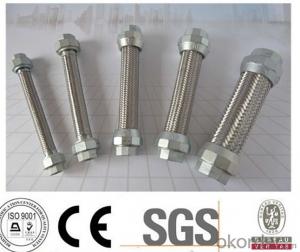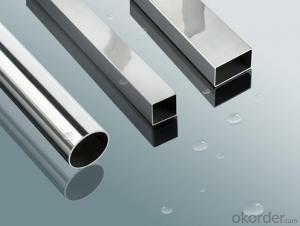Stainless Steel Braid Hose with Flexible Surface
- Loading Port:
- Tianjin
- Payment Terms:
- TT OR LC
- Min Order Qty:
- 10000 pc
- Supply Capability:
- 100000 pc/month
OKorder Service Pledge
OKorder Financial Service
You Might Also Like
Item specifice
Stainless Steel Braid Hose with Flexible Surface
Applications of Stainless Steel Braid Hose with Flexible Surface:
--Refueling system
--Chemical and pharmaceutical industry
--Industrial hydraulic systems
--Air conditioners in industrial and construction –site vehicles
--Food and beverage industry
--Special and standard industrial applications
--Water and cleaning management
Features of Stainless Steel Braid Hose with Flexible Surface:
1. )O. D.: 13-18MM 0.2-3M long
2. )Nut.: Nickel/Chrome Plated Brass (Zinc / Iron / Aluminum is available)
3. )Size Of Nut.: Female&Male 1/2''; 3/4''; 3/8''; 7/8''; 5/16'', and M10...
4. )Insert.: Brass (Zinc / Aluminum / Plastic is available)
5. )Inner tube.: Rubber/ EPDM/PVC
6. )Covered Material: Stainless Steel 201, 301, 304 /Aluminium Wire
7. )Working Pressure: 5Kg-15Kg
8. )Temperature: 0-92° C
9. )Quality Assurance: 3 years
RemarkAPPLICATION: HOUSEEHOLD WARE, BATHROOM WARE, SHOWER HOSE
PAYMENT: T/T, L/C
DELIVERY TIME: 20DAYS OR 30DAYS AFTER RECEIVED 30% DEPOSITS
MOQ: 5000PCS
ODM&OEM IS ACCEPTABLE
PackageInner: PP bag /Blister packing Outer: Carton box
Specifications of Stainless Steel Braid Hose with Flexible Surface:
NO | I.D | Refer to O.D | Working pressure | Burst pressure | approximate Weight | |||||
(inch) | (mm) | (inch) | (mm) | MPa | Psi | MPa | Psi | kg/m | lbs/ft | |
1 | 1/8 | 3.2±0.2 | 0.35 | 9±0.3 | 2.06 | 300 | 8.27 | 1200 | 0.078 | 0.12 |
2 | 5/32 | 4±0.2 | 0.4 | 10±0.3 | 2.06 | 300 | 8.27 | 1200 | 0.092 | 0.14 |
3 | 3/16 | 4.8±0.2 | 0.43 | 11±0.3 | 2.06 | 300 | 8.27 | 1200 | 0.108 | 0.16 |
4 | 1/4 | 6.3±0.3 | 0.5 | 12.7±0.3 | 2.06 | 300 | 8.27 | 1200 | 0.134 | 0.2 |
5 | 5/16 | 8.0±0.3 | 0.56 | 14±0.3 | 2.06 | 300 | 8.27 | 1200 | 0.147 | 0.22 |
6 | 3/8 | 9.5±0.3 | 0.63 | 16±0.4 | 2.06 | 300 | 8.27 | 1200 | 0.182 | 0.27 |
7 | 15/32 | 12±0.3 | 0.75 | 19±0.5 | 2.06 | 300 | 8.27 | 1200 | 0.238 | 0.35 |
8 | 1/2 | 12.7±0.4 | 0.78 | 20±0.5 | 2.06 | 300 | 8.27 | 1200 | 0.262 | 0.39 |
9 | 5/8 | 16±0.4 | 0.94 | 24±0.5 | 1.03 | 150 | 4.12 | 600 | 0.351 | 0.52 |
10 | 3/4 | 19±0.4 | 1.13 | 28.8±0.5 | 1.03 | 150 | 4.12 | 600 | 0.515 | 0.77 |
11 | 1 | 25.4±0.5 | 1.38 | 35±0.6 | 1.03 | 150 | 4.12 | 600 | 0.637 | 0.95 |
Images of Stainless Steel Braid Hose with Flexible Surface:
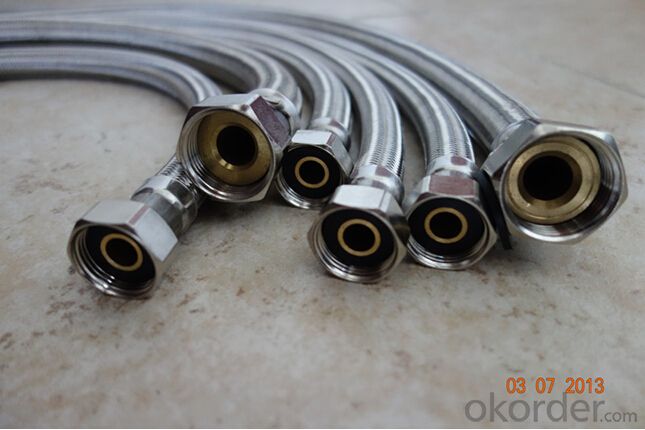
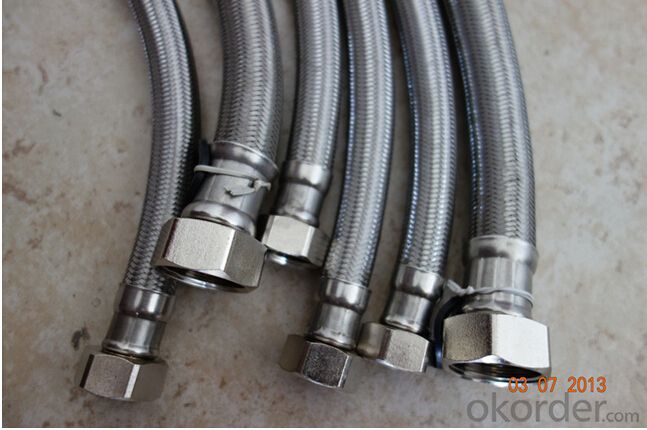
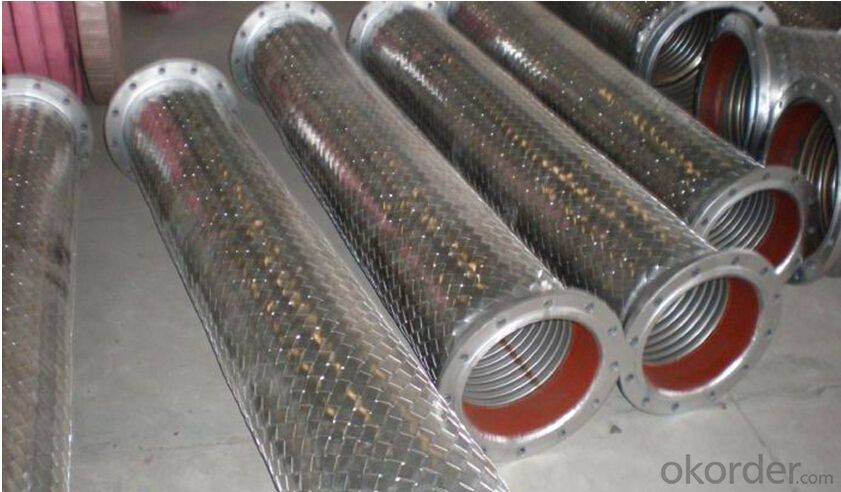
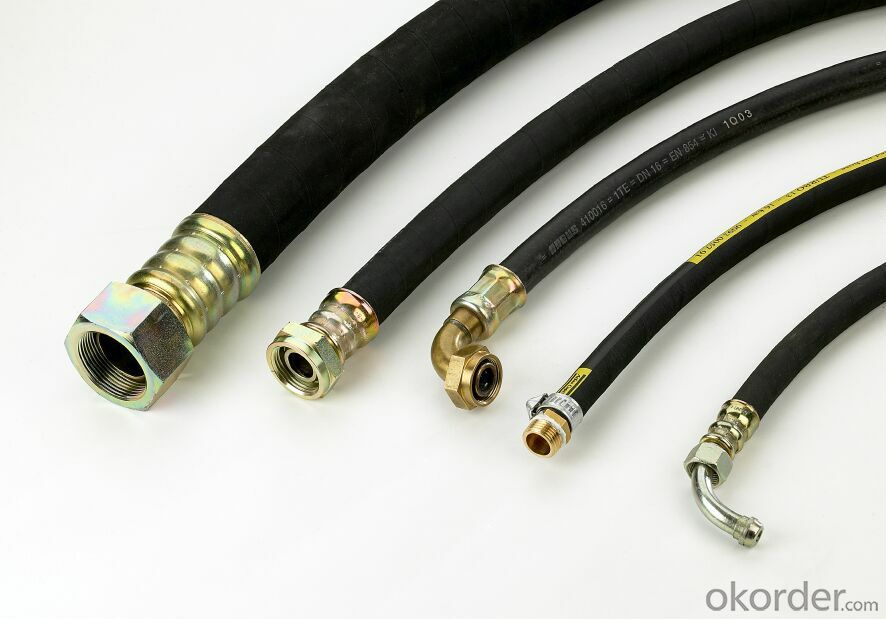
Package of Stainless Steel Braid Hose with Flexible Surface:
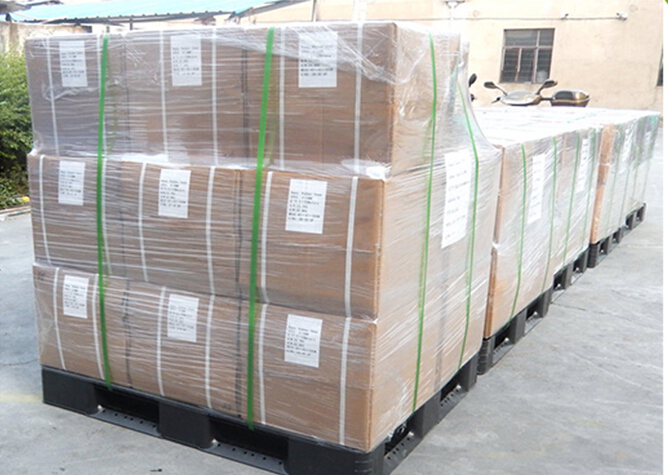
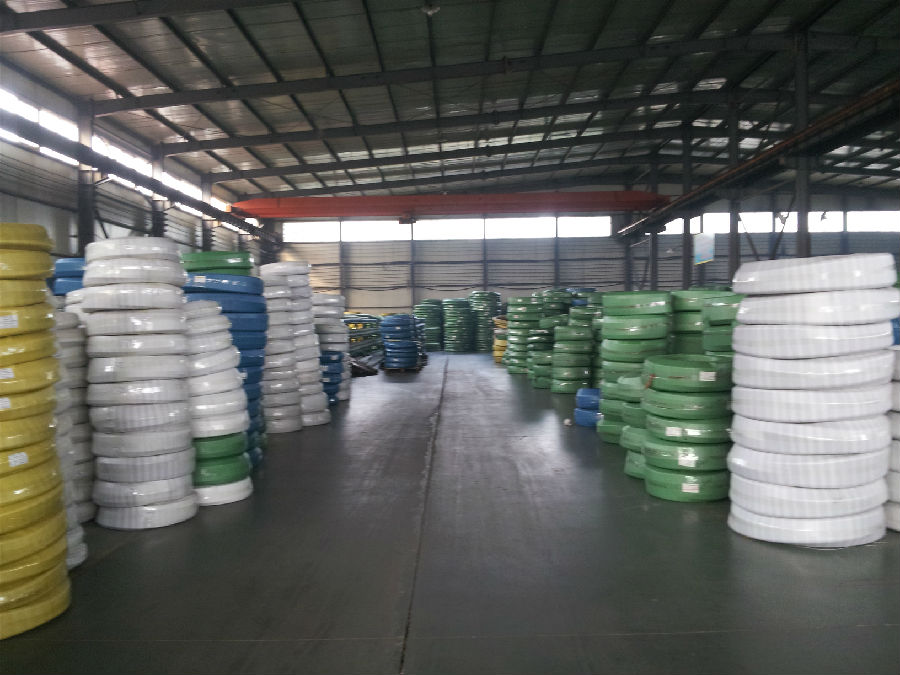
FAQ of Stainless Steel Braid Hose with Flexible Surface:
Who we are:
Answer: We CNBM is a Chinese state-owned enterprise ranked 267th among the Global Fortune 500, as the largest building materials company,we have over 300 affiliated companies,and so many production lines and branch office distribute in China.
2. About our quality:
Answer: Every product needs to be quality proved before shipping.
3. About our service:
Answer: We could gurantte that we can reply you in 2 working hours.
- Q:304 stainless steel, welded to seamless difference in what place?
- The seamless tube is made by pressing a hole in a stainless steel billet at a temperature of 2200 degrees F. At this high temperature, the tool steel is made soft and spirally shaped from the hole by stamping and drawing. Thus, the wall thickness of the pipeline is uneven and the eccentricity is high. Thus ASTM allows seamless pipe wall thickness ratio of the wall thickness difference of seamed tube. Through the seamed tube cold rolling plate precision (per roll width is 4-5 feet) made. These cold rolled plates usually have a maximum wall thickness of 0.002 inches. The steel plate is cut into a width of PI D, in which D is the outer diameter of the pipe. Tube wall thickness tolerance is very small, and the entire circumference of the wall thickness is very uniform.
- Q:What are the common standards for stainless steel pipes?
- The common standards for stainless steel pipes vary depending on the specific application and industry. However, there are several widely recognized standards that are commonly used in the manufacturing and specification of stainless steel pipes. One of the most widely used standards is ASTM International, which sets the standards for various materials, including stainless steel. ASTM A312/A312M is the standard specification for seamless, welded, and heavily cold worked austenitic stainless steel pipes. This standard covers a wide range of pipe sizes and grades, including TP304, TP316, TP321, and more. Another commonly referenced standard is the American National Standards Institute (ANSI) standards. ANSI B36.19 specifies the dimensions, tolerances, and materials for stainless steel pipes. This standard covers both seamless and welded stainless steel pipes and includes a range of sizes and schedules. In addition to these standards, there are also specific standards for certain industries. For example, the American Petroleum Institute (API) has standards such as API 5L for line pipes used in the oil and gas industry. These standards outline the requirements for materials, dimensions, and testing for stainless steel pipes used in specific applications. Other standards organizations, such as the International Organization for Standardization (ISO) and the European Committee for Standardization (EN), also provide standards for stainless steel pipes. ISO 1127, for example, specifies the dimensions and tolerances for stainless steel pipes used in general purposes. It is important to note that these standards are continuously updated and revised based on technological advancements and industry needs. Therefore, it is crucial to consult the latest versions of these standards to ensure compliance and quality in the manufacturing and use of stainless steel pipes.
- Q:Can stainless steel pipes be used for air conditioning systems?
- Yes, stainless steel pipes can be used for air conditioning systems. Stainless steel is known for its corrosion resistance, durability, and ability to handle high temperatures, making it a suitable material for air conditioning systems. It helps maintain the quality of air and prevents contamination due to its non-reactive nature. Additionally, stainless steel pipes offer excellent mechanical strength and are resistant to damage caused by external factors such as moisture or chemicals.
- Q:Are stainless steel pipes suitable for drinking water applications?
- Stainless steel pipes are indeed appropriate for drinking water purposes. Thanks to their exceptional durability and resistance to corrosion, stainless steel proves to be an outstanding selection for the transportation of drinking water. It refrains from releasing any hazardous elements into the water and resists rust and scaling, thereby guaranteeing the cleanliness and safety of the water for consumption. Moreover, stainless steel pipes are effortlessly cleaned and maintained, thus enhancing the hygiene of the water supply. Furthermore, the prolonged lifespan and dependability of stainless steel pipes render them a cost-efficient resolution for drinking water applications.
- Q:What are stainless steel pipes used for?
- Various industries widely use stainless steel pipes because of their exceptional durability, resistance to corrosion, and high strength. These pipes have extensive applications in plumbing systems, oil and gas industries, chemical processing plants, food and beverage processing, pharmaceutical industries, and automotive manufacturing, among others. Plumbing systems favor stainless steel pipes due to their ability to withstand high pressure and temperature, making them suitable for transporting water, gas, and other fluids. They are also commonly used in sewage and drainage systems because of their resistance to corrosion and chemical substances. In the oil and gas industries, stainless steel pipes are indispensable for transporting petroleum products, natural gas, and other fluids under high pressure and extreme temperatures. Their corrosion resistance properties make them essential in offshore and onshore drilling operations, refineries, and petrochemical plants, ensuring the safe and efficient transportation of these substances. Chemical processing plants rely on stainless steel pipes because of their resistance to chemical reactions and high temperatures. These pipes are used to transport various corrosive chemicals and gases without the risk of contamination or leakage. Additionally, they are utilized in heat exchangers, reactors, and other equipment that require corrosion-resistant materials. The food and beverage industry heavily relies on stainless steel pipes due to their hygiene and sanitary properties. These pipes are used for conveying various food products, such as milk, wine, beer, and other liquids, without altering their taste or quality. They are easy to clean, maintain, and sterilize, making them ideal for this industry. In the pharmaceutical sector, stainless steel pipes play a crucial role in conveying various drugs, chemicals, and sterile fluids. They meet the stringent requirements of the industry by ensuring product purity, preventing contamination, and offering resistance to corrosion and temperature extremes. Furthermore, stainless steel pipes are utilized in automotive manufacturing because of their structural strength and resistance to heat and corrosion. They are used in exhaust systems, fuel lines, and other components where durability and resistance to extreme conditions are necessary. In conclusion, stainless steel pipes are versatile and essential in numerous industries, providing the perfect combination of strength, durability, and corrosion resistance required for a wide range of applications.
- Q:Are stainless steel pipes suitable for pulp and paper industries?
- Yes, stainless steel pipes are highly suitable for pulp and paper industries. This is primarily because stainless steel offers excellent corrosion resistance, which is crucial in environments where pulp and paper production takes place. The chemicals and liquids used in the pulp and paper industry can be highly corrosive, and stainless steel is resistant to corrosion caused by these substances. Additionally, stainless steel pipes are known for their durability and strength, making them capable of withstanding the rigorous demands of the industry. They can handle high temperatures and pressures, ensuring reliable and efficient performance in the production process. Furthermore, stainless steel pipes are hygienic and easy to clean, which is essential in maintaining the quality and integrity of the products in the pulp and paper industry. Overall, the exceptional properties of stainless steel pipes make them an ideal choice for use in the pulp and paper industry.
- Q:Can stainless steel pipes be used for underground water supply lines?
- Yes, stainless steel pipes can be used for underground water supply lines. Stainless steel is highly resistant to corrosion, making it an ideal choice for underground applications where the pipes may come in contact with soil, moisture, and other corrosive elements. It also has excellent strength and durability properties, ensuring that the pipes can withstand the pressure and stress of being buried underground. Furthermore, stainless steel is a hygienic material that does not leach any harmful substances into the water, making it safe for drinking water supply lines. Overall, stainless steel pipes are a reliable and long-lasting option for underground water supply lines.
- Q:What are the weight limitations for stainless steel pipes?
- The weight limitations for stainless steel pipes vary depending on several factors such as the grade of stainless steel, the pipe's dimensions, and the intended application. However, stainless steel pipes are known for their strength and durability, which allows them to withstand heavy loads. Generally, stainless steel pipes can support significant weight without deformation or failure. It is important to consult the manufacturer's specifications or engineering standards for precise weight limitations as they can provide the most accurate information specific to the particular type and size of stainless steel pipe being used.
- Q:What is the working temperature range for stainless steel pipes?
- The working temperature range for stainless steel pipes typically ranges from -150°C (-238°F) to 816°C (1500°F).
- Q:Are stainless steel pipes suitable for architectural applications?
- Indeed, architectural applications are well-suited for stainless steel pipes. This material, known for its durability and resistance to corrosion, can endure even the harshest environmental conditions, making it an ideal option for architectural projects. Notably, it is frequently utilized in structural applications, such as handrails, guardrails, and balustrades, owing to its robustness and attractive appearance. Moreover, stainless steel pipes are highly versatile, allowing for easy shaping and welding to create distinctive designs and structures. Furthermore, they require minimal maintenance and can be polished to a brilliant shine, thereby enhancing the overall aesthetic of architectural projects. In summary, stainless steel pipes are an exceptional choice for architectural applications due to their durability, resistance to corrosion, versatility, and aesthetic appeal.
1. Manufacturer Overview |
|
|---|---|
| Location | |
| Year Established | |
| Annual Output Value | |
| Main Markets | |
| Company Certifications | |
2. Manufacturer Certificates |
|
|---|---|
| a) Certification Name | |
| Range | |
| Reference | |
| Validity Period | |
3. Manufacturer Capability |
|
|---|---|
| a)Trade Capacity | |
| Nearest Port | |
| Export Percentage | |
| No.of Employees in Trade Department | |
| Language Spoken: | |
| b)Factory Information | |
| Factory Size: | |
| No. of Production Lines | |
| Contract Manufacturing | |
| Product Price Range | |
Send your message to us
Stainless Steel Braid Hose with Flexible Surface
- Loading Port:
- Tianjin
- Payment Terms:
- TT OR LC
- Min Order Qty:
- 10000 pc
- Supply Capability:
- 100000 pc/month
OKorder Service Pledge
OKorder Financial Service
Similar products
New products
Hot products
Hot Searches
Related keywords

